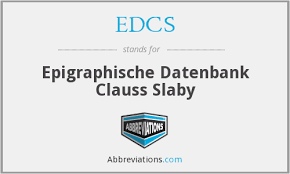(Español) MUCN40 Titulus pictus rupestre
Reference HEp 1990, 502 | Description | Lyrics | Location | Chronology | Epigraphic edition | Translation | Apparatus | Comentary | Type of verse | Text divided into verses and metric signs | Images | Bibliography | Link to DB | Author |
Description
- Idno filename 22/02/0059
- Type of inscription: Parietalis
- Support: Rupestre
- Material: Arenisca
- Conservation status: Fragmentario.
- Conservada
Lyrics
- Font:Tituli picti
Location
- Geolocation
- Location with Modern Nomenclature España / Murcia / Fortuna
- Location with Old Nomenclature Hispania / Citerior / Carthaginensis
Chronology
- Inscription's dating: Between year 100 and year 199
- Dating explanation: S. II d. C. (anterior a MU CN 38).
Type of verse
- Type of verse: Dactílico (hexámetro)
- Verse/line correspondence: Si
- Prose/verse distinction: No
Epigraphic edition
‑ ‑ ‑ ‑ ‑ ‑
[‑ ‑ ‑]+na+[.]++n ḷibe+aṣ+4+[‑ ‑ ‑]
[‑ ‑ ‑]+[-3?-]+[-9?-]+[‑ ‑ ‑]
[‑ ‑ ‑]++[‑ ‑ ‑]
5 [‑ ‑ ‑]+ịere nivales
[‑ ‑ ‑]+tare fontem
[‑ ‑ ‑]+ fuịsse sub anṭrọ
[‑ ‑ ‑]ẹsque f[u]gax [‑ ‑ ‑]
[‑ ‑ ‑]++ẹ++ọṃịṇạ+ru+[‑ ‑ ‑]
10 [‑ ‑ ‑]+++[.]ae[…]+[..]+++[‑ ‑ ‑]
10 [‑ ‑ ‑]++o+++[-6?-] ḷạ[v]ạcrum
Text divided into verses and metric signs
‑ ‑ ‑ ‑ ‑ ‑
[‑ ‑ ‑]na[- – -]n libe[-]as[‑ ‑ ‑]
[‑ ‑ – – ‑ ‑]
[‑ ‑ ‑ ‑ ‑ ‑]
5 [‑ ‑ ‑]iere nivales [ln|ln|ln|lk]k|lkk|l~
[‑ ‑ ‑]tare fontem [ln|ln|ln|ln]|xk|l~
[‑ ‑ ‑] fuisse sub antro [ln|ln|ln|lk]k|lkk|l~
[‑ ‑ ‑]esque f[u]gax [‑ ‑ ‑] [ln|ln]|lk/k|l/[n|lkk|l~]?
[‑ ‑ ‑]e[- -]omina[-]ru[‑ ‑ ‑]
10 [‑ ‑ ‑]ae[‑ ‑ ‑]
[‑ ‑ ‑]o[- – -] la[v]acrum [ln|ln|ln|ln|lk]k|l~
Bibliography
Stylow – Mayer 1987, 215–217, 223–227, III/3 (AE 1987, 655s; HEp 1990, 502) = 1996, 389–391, 396–400, III/3; Mayer 1995, 92; Stylow – Mayer apud Mayer 1996, 420 n. 40 (inde Cugusi 2002, 71 n. 40, cf. p. 74, 78, 79; Hernández Pérez 2007, 304–305, n. 10 [HEp 2007, 476]); Cugusi 2012, 90p. – Cf. Mariner 1987, 247–251 = 1996, 435–440; Gómez Pallarès 1995b, 78; Velázquez Soriano – Espigares 1996, 474 n. 40.
Apparatus
10 ++[.]+crum Stylow – Mayer, la[v]acrum Cugusi, Hernández Pérez.
Comentary
Hexámetros a juzgar por las líneas 4-6, que concluyen con sendas cláusulas heroicas. Parece evidente que hay una descripción de la Cueva Negra mediante el tópico del locus amoenus.
- 4 Cf. MU CN 37,10. – 5 Debe conjeturarse un ablativo como, p. ej., nectare. – 6 Cf. Verg. Aen. 3,431: … vidisse sub antro (cf. también MU CN 37,10, y MU CN 33,4). – 8 Cf. MU CN 38,8, y comentario a MU CN 37,13. – 10 lavacrum es término recurrente, como es natural, en los versus balnearum (cf. Anth. Lat. Sh. Bailey 109,1; 164,1; y MU CN 35,14).
Author
- Author:R. Hernández Pérez
- Last Update2023-03-31 11:03:34
You can download this





